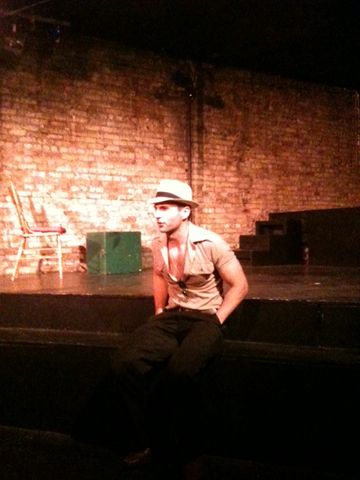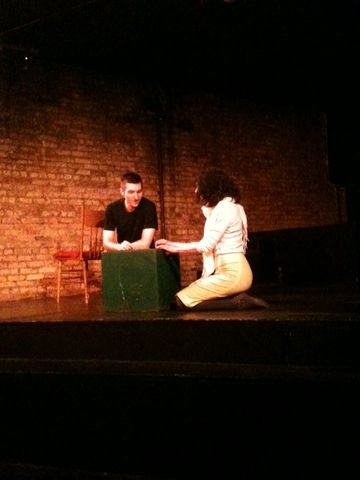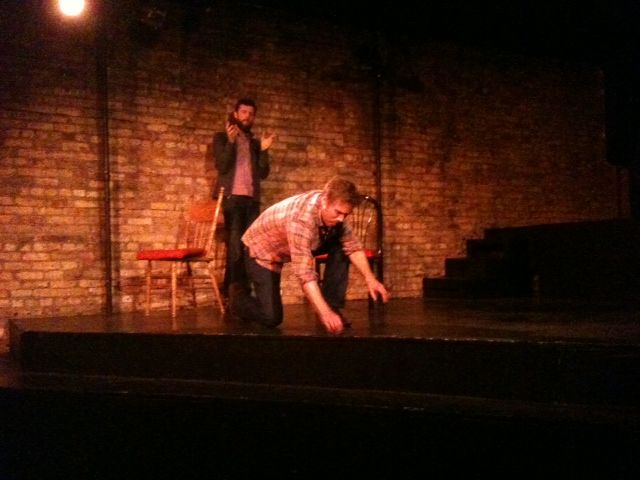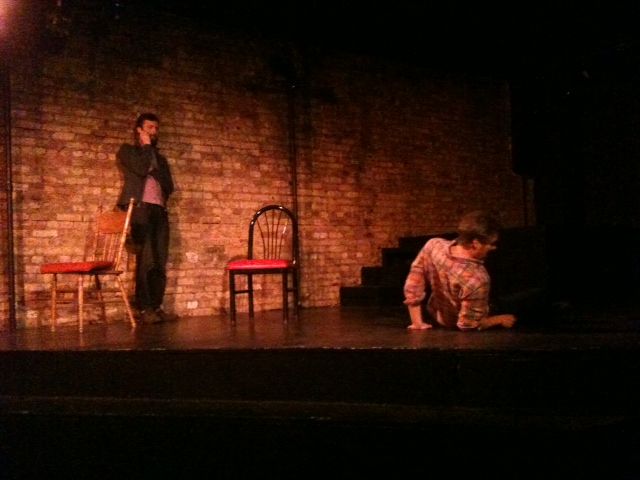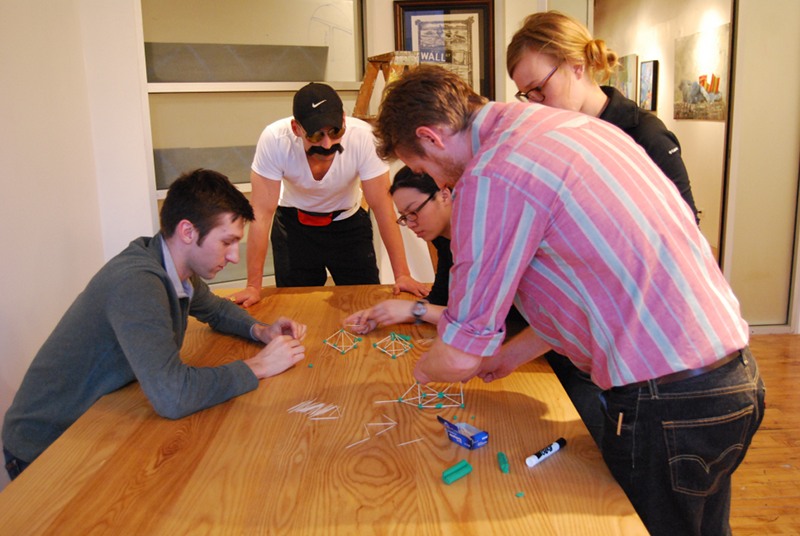
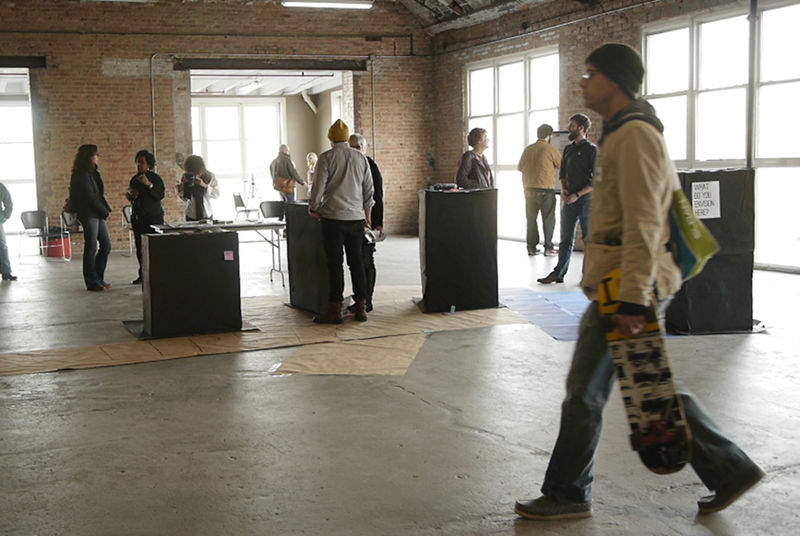
Opportunity
Solution
Detailed Curriculum:
"Do"
Bodies at work, minds in motion.
Patrick C. Cunningham
Comprised primarily of hands on experiences, "Do" is active personal learning within a group dynamic. Small team activities orient participants towards shared objectives achieved through teamwork along with proper skills assessment and implementation. Humor, among a general outlandish context, is used to provide a cover for everyone to assess the situation at hand and then organically insert their perspective as well as skills in whatever manner they deem fit. For example, if team members are having a good time laughing while building a cantilever toothpick bridge in competition with other teams, they are implicitly negotiating group dynamics towards a common objective, sharing/critiquing design proposals, and communally engaging in the building process. Activities focus on improving skills including critical thinking, analytical problem solving, peer to peer communication, deadline oriented achievement, and public presentation among others. "Do" is an ecosystem of opportunity for both explicit as well as more subtle, organic, learning opportunities and most importantly, "Do" means getting to work!
“Coach Jackson and the Majestic”
Do Session #1
The first Do frame ignited participatory design through activities comprised of small teams facing three distinct design challenges. Fun, laughter, and high energy were encouraged by the special “guest” Coach Jackson who essentially functioned as a mythical cheerleader on steroids. The members of teams changed through each challenge so students could benefit from negotiating group dynamics with as many different peers as possible. Objectives were simple and clearly defined by Coach Jackson who then intentionally focused on minimally explaining rules. In doing so, students could focus on collectively achieving a design objective through creative solutions and not be overly focused adhering to arbitrary boundaries. Essentially, the motivation was to provide enough information for students to understand a goal, but leave ample room for their ingenuity to function flexibly and rigorously. Elements of collaboration, deadline-oriented working, hands-on design/build, public presentation, and motivational performance were integral to the program.
Do1 Activities:
1. “Reaching Out” - small groups design a cantilever toothpick and clay structure to reach as far as possible across a boundary. Teams were under a time constraint and in competition with one another.
2. “Reaching Together” - students self-organized into small groups that were then given a single phrase to illustrate through performance utilizing found materials and each other. Each phrase was illustrative of a single element of the design process that when combined formed a narrative of ideation, design, revision, and achievement.
3. “Reaching Goals” - individuals shared single goals they wish to achieve before death. As these were verbally shared around the communal circle, an assistant wrote each person's goal on a piece of balsa wood. Students then symbolically “achieved” these goals with karate style board breaks.
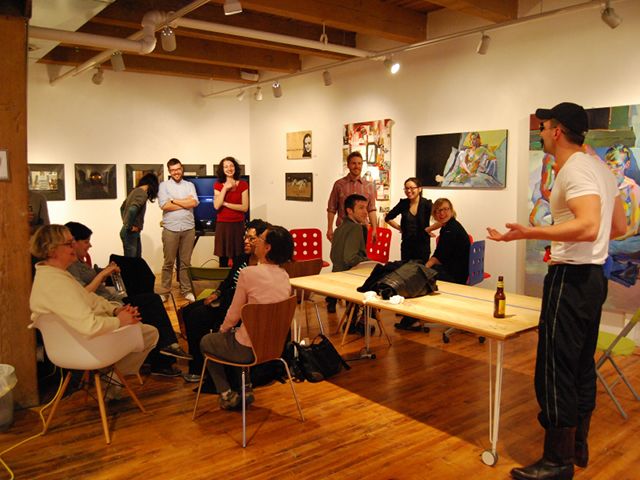
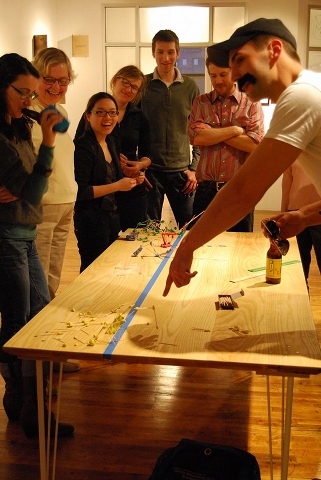
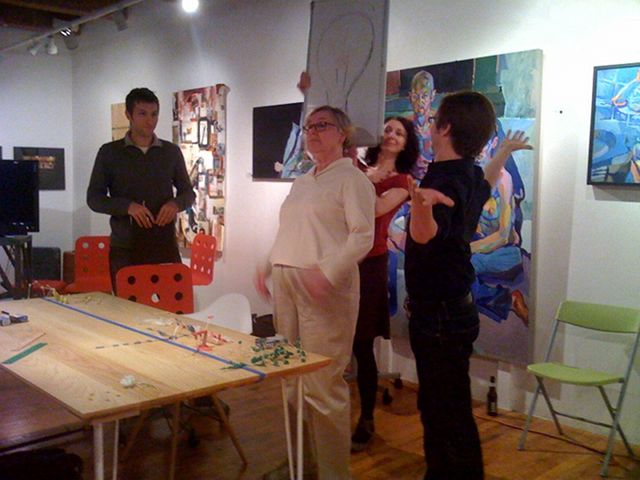
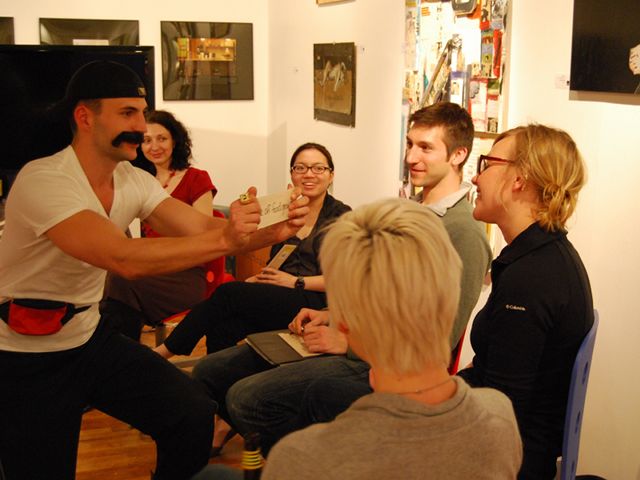
“Sergeant Patton and the Good Design Time Machine”
Do Session #2
Sergeant Patton, a paramilitary Archeworks designer from the future and great-great-great-great-great-great-great-great-great-great-grandson of General George S. Patton, arrived from a future beset with bad design to help train present day Archeworkers. Exploring and understanding one's resources for available use towards team-based challenges were key to this session. Activities were geared towards designing functional structures to perform a task as well as developing team cohesion through public presentation of thematic team elements (song, style, logo, and motto). A short safety tutorial on shop rules and tools preceded the evening's events.
Do2 Activities:
1. “Recon” - students explored the Archeworks shop space and Kingsbury facility taking stock of available tools, materials, and space.
2. “Artillery” - using found materials from Recon, teams designed, assembled, and used projectile based systems for hitting a target from behind a boundary. All elements used to build the launchers and projectiles were sourced via re-use of the surrounding environment. Resourcefulness and recycling ingenuity were strongly encouraged.
3. “Ground Assault” - built structures had to be destroyed by each team with the caveat that members must remain behind a boundary roughly 10 feet away. Objects could cross the line but not the operators. Retractable wheeled structures and extension mechanisms were two examples of design innovation.
4. “Pomp and Circumstance” - teams developed emblems, mottos/songs, and decorated helmets/uniforms to encourage cohesion through collaborative packaging and public presentation design.
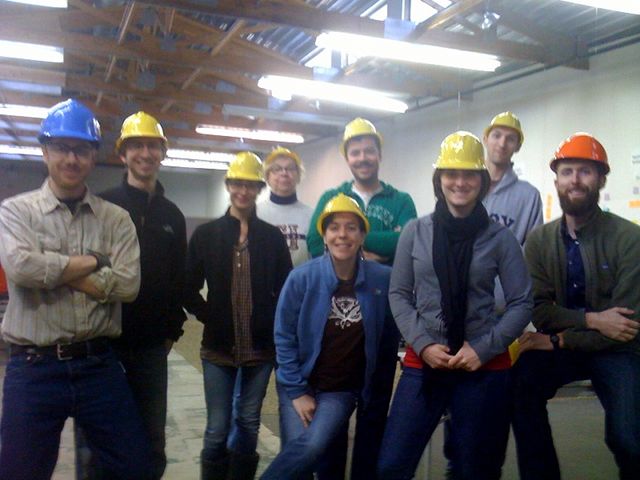
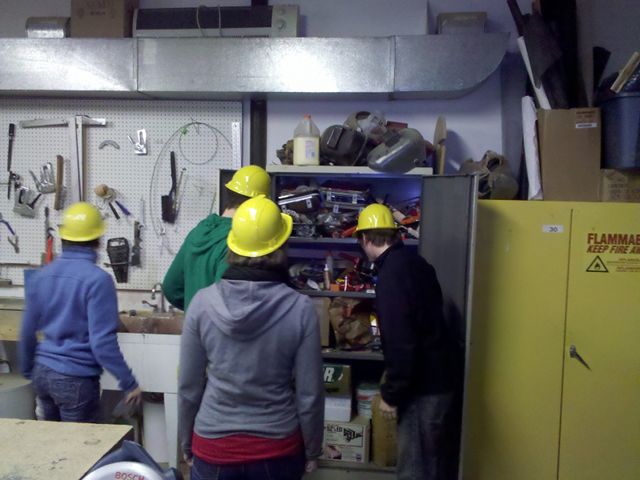
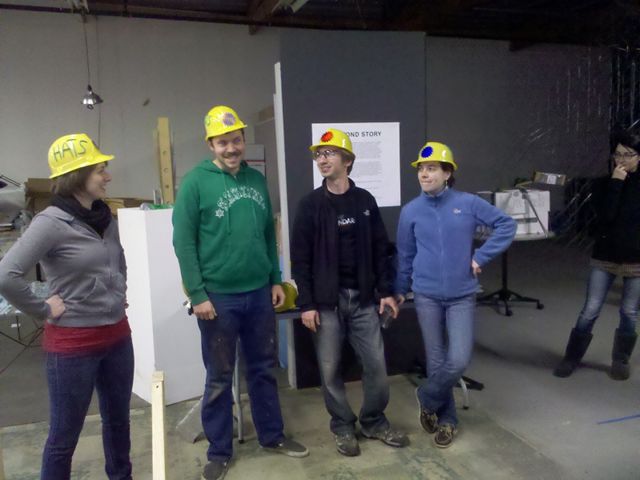
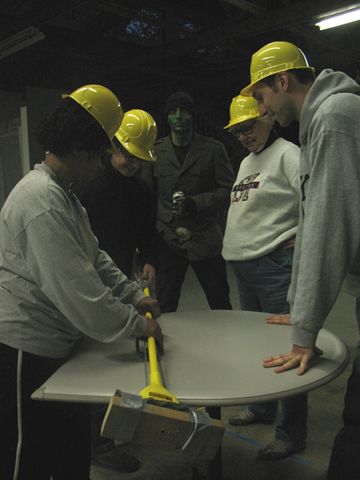
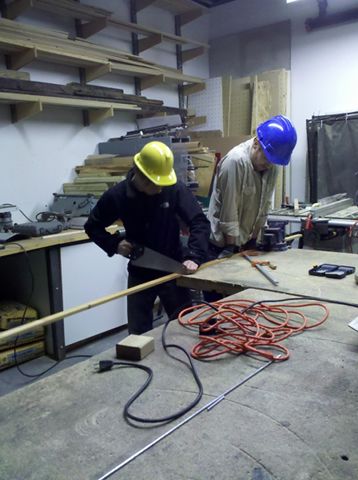
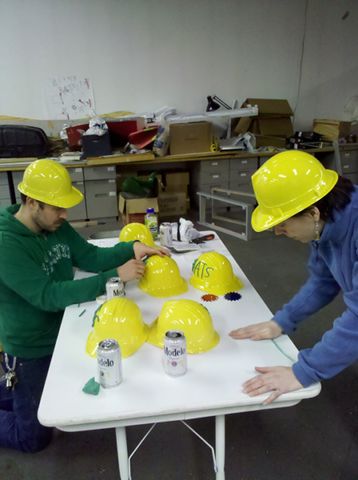
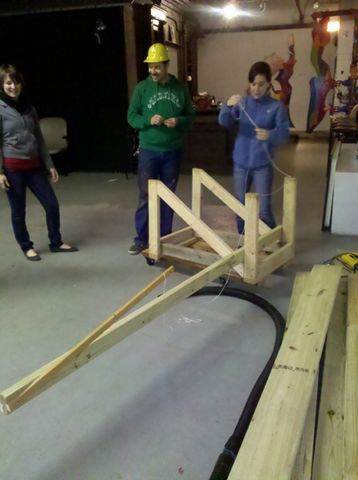
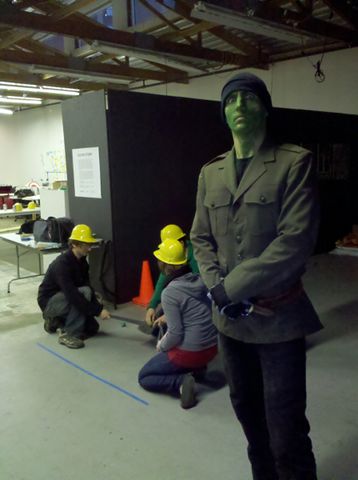
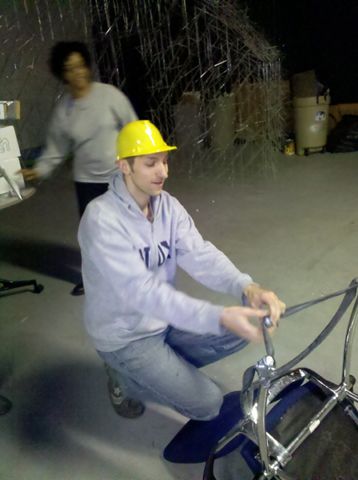
"Design-preneurship"
Do Session #3
Donald Lehman came to share his story of invention, design, and entrepreneurship. He is the founder of More/Real LLC in Chicago:
“More/Real Stylus Caps turn Sharpie Fine Points, Bic Round Stics, and Pilot Fineliners into capacitive touchscreen styluses that work with iPad & iPhone, as well as Android, Windows Phone, and webOS devices.”
His design innovation arose from a simple, personal, problem to make transitioning between touch screen devices and traditional ink paper notation much easier and smoother. In his own description, he felt the user interface for current devices was closer to finger painting and he wanted to make the process more like sketching with a pen or marker. What started as an idea for a few friends was transformed via crowd-sourced funding into a thriving startup business. Many insightful decisions he shared were key to illustrating the process of taking an idea from the brain all the way to market. One such example would be his conscious decision to keep manufacturing in the United States and specifically his hometown of Rochester, NY. By doing so, he assured a slightly higher price to the consumer but also clearly illustrated an ethical business outlook that engendered goodwill with his user base and also resulted in improved design through direct, face-to-face, conversations with workers assembling the styluses. Through a personal history and entrepreneurial story, Donald was able to illustrate numerous elements combining design, business, ethics, presentation, activism, and more.
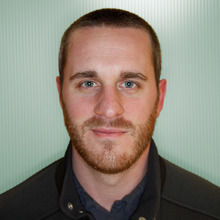
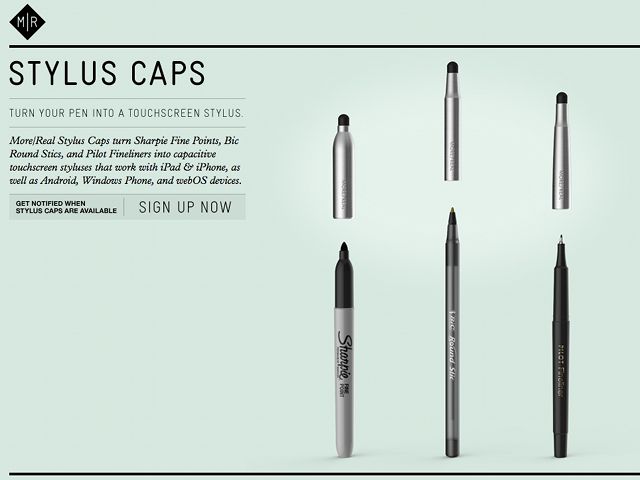
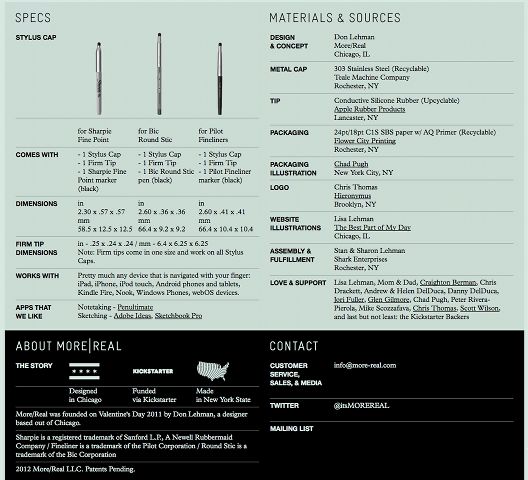
“Lights Up...Action!”
Do Session #4
Special guest “Rodrigo” visited to present lessons learned from several lifetimes lived on stage, performing in front of audiences the world over. In close proximity to the Archeworks' final presentations, the final Do session was geared exclusively to public speaking, collaborative presentation, and fast-paced improvised problem solving. The session took place in a local Chicago theater complete with a raised stage, theater seating, and professional theatrical lighting operation.
Do4 Activities:
1. “Being” - half of the group would stand on stage while the other half sat in the theater seats. Going down the line, one person from the audience would say something for a corresponding person on stage to “become.” For example, if an audience member said “pogo stick” the corresponding performer could then jump up and down. The exercise promotes becoming aware of one's body in space during public presentation as well as rapid response to stimuli.
2. “Telling” - pairing up with members from the opposite studio, teams of two developed narrative and action performances. One person would verbally recount a particularly impactful story from their time at Archeworks while their partner would physically and interpretively act it out, then roles would switch. Teams had roughly 10 minutes of prep time before performing. Navigating both a literal and figurative understanding between teammates was essential.
3. “1 year in 10 minutes” - the final exercise gave students, in their studio groups, roughly 10 minutes to develop their final presentations and then perform for the other studio. Such a strict time-frame limitation forced students to get to the core of what their projects were and how to tell their story. With creative resourcefulness as the key, students could rely solely upon their ingenuity and each other to compress almost a year of work into a concise and engaging performance. Moving beyond simply presenting information, students used unconventional narrative and character-based interaction in space to tell their story.
